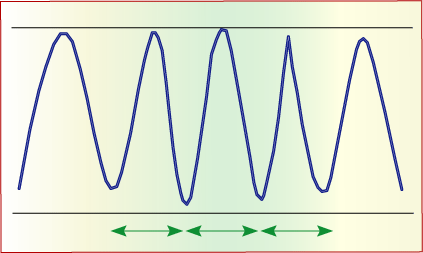An Empirical Phenomenon
The Missing Cycle
If you think cycles are all about identifying turning points so you can buy at the low and sell at the high, think again. Here's really what to pay attention to.
IN the year 2002, predictions of a major economic deflationary period and massive unemployment, followed by a great depression, were featured news items. The predictions were based on popular wave, cycle, and economic theories. Despite the pessimistic mood of the day, the stock market hit bottom in 2002 and started the uptrend that remains intact today.
In 2000, the Y2K calamity was supposed to topple world governments and destroy civilization. In 1995, 1991, 1987, 1984, 1979, and 1972, terrible worldwide calamities followed by a worldwide depression were predicted based upon known and documented cycle theory.
THE NATURE OF CYCLES
Why the inaccuracies, you ask? To answer that question it is necessary
to understand the nature of cycles. Cycle theory for stock markets and
economies is relatively young. It began in the mid-1930s, when cycle theorists
began to see a correlation between cycles found in nature, the environment,
climate, human population, and the stock market. The first theories relating
to the stock market-based cycles on the presumption that natural events
such as corn production were the primary cycles that caused the stock market
to rise and fall. But as cycle theory developed, it became evident that
more than the cycles of nature were causing changes in the stock market.
Climate was studied, population cycles were studied, and finally fiscal
monetary policy was studied. The business cycle theory became highly publicized
and is still used today to explain the phenomenon of the ups and downs
of the stock market (Figure 1).

FIGURE 1: THE FOUR-YEAR BUSINESS CYCLE. A complete cycle is measured from trough to trough.
Business cycle theory is actually made up of numerous theories and cycles:Kitchen = Three to four years (popular among short-term traders) Presidential = Four years (a variation of the kitchen) Juglar = Nine to 10 years Kuznets = 15 to 20 years Kondratieff = 54 years
...Continued in the April issue of Technical Analysis of STOCKS
& COMMODITIES
Excerpted from an article originally published in the April 2007
issue of Technical Analysis of
STOCKS & COMMODITIES magazine. All rights reserved. © Copyright
2007, Technical Analysis, Inc.
Return to April 2007 Contents